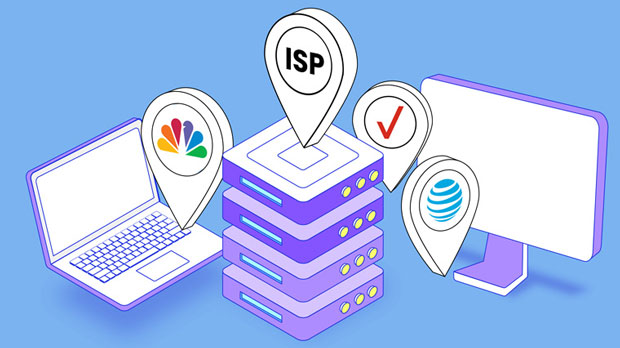The use of proxy servers in web services has become increasingly important due to their ability to act as intermediaries between end users and the servers hosting web applications. When it comes to mobile devices, understanding whether proxies support seamless access and optimal performance is crucial. Mobile devices, with their varying network conditions, screen sizes, and processing power, face unique challenges when interacting with web services. This article delves into how proxies function in web services and analyzes their compatibility with mobile devices. Through this exploration, we aim to provide insights into whether proxies can enhance or hinder mobile web experiences. 1. Introduction to Proxy Servers in Web ServicesA proxy server is essentially an intermediary between a client device and a web service or server. It processes requests from the client, forwards them to the target server, and then returns the server's response to the client. The use of proxies is prevalent in web services for multiple reasons, including security, anonymity, caching, and content filtering. They play a pivotal role in ensuring smooth and efficient communication between end users and servers by acting as a buffer, improving load times, and protecting user privacy.Mobile devices, on the other hand, are becoming the dominant form of internet access, and their interactions with web services are complex. These devices often operate on mobile networks, which can be slower or less reliable than traditional broadband connections. The question arises: Do proxies in web services enhance or limit mobile device access? This question is central to understanding the potential of proxies in improving mobile web experiences.2. How Proxies Work with Mobile DevicesWhen we talk about mobile devices accessing web services through proxies, several factors come into play, including network latency, data compression, and device capabilities. Mobile devices often experience fluctuating network speeds, ranging from fast 4G/5G connections to slower 3G or even EDGE connections. This inconsistency in speed can lead to poor web experiences if proxies are not optimized to handle such conditions effectively.Proxies, when configured properly, can improve mobile device access by offering several advantages:- Data Compression: Mobile networks are bandwidth-constrained. Proxies can compress data before sending it to the device, reducing load times and data consumption.- Caching: Proxies often store copies of frequently requested resources. This means that repeated access to the same data can be served from the proxy’s cache, significantly speeding up load times for mobile users.- Load Balancing: In situations where multiple requests are being made to the same service, proxies can distribute the load across different servers, ensuring that no single server is overwhelmed. This is particularly important for mobile devices that may experience performance issues if the server is overloaded.However, proxies also face challenges when supporting mobile devices:- Latency: The process of routing data through an intermediary server can introduce additional latency. This may be particularly problematic for mobile users, especially when they are on slower networks.- Compatibility Issues: Mobile devices come in various operating systems, screen sizes, and hardware configurations. A proxy server must be capable of delivering content that is optimized for different devices, otherwise, it could lead to compatibility issues or suboptimal user experiences.- Security Concerns: Some proxies, especially those that perform content filtering or deep packet inspection, may inadvertently compromise security on mobile devices. For example, proxies that are not properly configured can expose mobile users to risks such as man-in-the-middle attacks.3. Benefits of Proxy Servers for Mobile Device AccessDespite the challenges, the use of proxies in web services offers distinct benefits that can enhance mobile device access. Below are some of the key advantages:- Improved Performance: By caching frequently requested content and compressing data, proxies can improve the load time of websites and services on mobile devices, especially in regions with slow internet connections.- Reduced Bandwidth Consumption: Mobile data plans often come with data limits, and users are generally concerned about using excessive bandwidth. Proxies help by reducing the overall amount of data required to load a page, which is especially beneficial for mobile users who need to conserve data.- Better Security and Anonymity: Proxies can mask the IP addresses of users, offering greater privacy and security, which is crucial for mobile users accessing sensitive services. Additionally, proxies can help bypass geographical restrictions by routing traffic through different locations.- Optimized for Mobile Networks: Some modern proxies are specifically designed to optimize content for mobile networks, taking into account factors like lower bandwidth and unstable connections. This optimization improves user experience by adapting the content to the mobile device's specifications.4. Limitations of Proxy Servers for Mobile Device AccessWhile proxies provide several benefits, there are notable limitations to their effectiveness, particularly when it comes to mobile devices:- Increased Latency: Proxies inevitably introduce a slight delay in communication because all data must pass through an intermediary server before reaching the client. This latency may be especially noticeable for mobile users, where network conditions are often less stable.- Device-Specific Challenges: Mobile devices vary greatly in terms of screen size, resolution, and processing power. Proxies must be able to adapt the content they deliver to suit these diverse requirements. If a proxy does not optimize for specific device types, it could lead to a poor user experience, such as distorted layouts or slow loading times.- Network Instability: Mobile networks are prone to fluctuations in speed, particularly in areas with limited coverage. Proxies may struggle to maintain consistent performance in such environments, leading to slow or unreliable access to web services.- Complex Configuration: To fully leverage proxies in web services for mobile devices, the configuration can be complex. Setting up proxy servers that optimize for mobile use often requires careful tuning, and failing to do so may result in degraded performance.5. ConclusionIn conclusion, proxy servers do support mobile device access, but their effectiveness depends on how well they are configured and optimized. Proxies can significantly enhance mobile web experiences by improving performance, reducing bandwidth consumption, and providing additional security. However, they are not without their limitations, including potential latency issues and the complexity of delivering content optimized for mobile devices.For web services to fully benefit from proxy servers, it is crucial to ensure that the proxies are designed with mobile devices in mind. This includes implementing strategies such as data compression, caching, and adaptive content delivery. As mobile devices continue to dominate internet usage, the role of proxies in optimizing mobile access will only grow in importance. By understanding and addressing the challenges and benefits of proxies, businesses can provide a smoother, faster, and more secure web experience for their mobile users.
Jul 04, 2025



































































